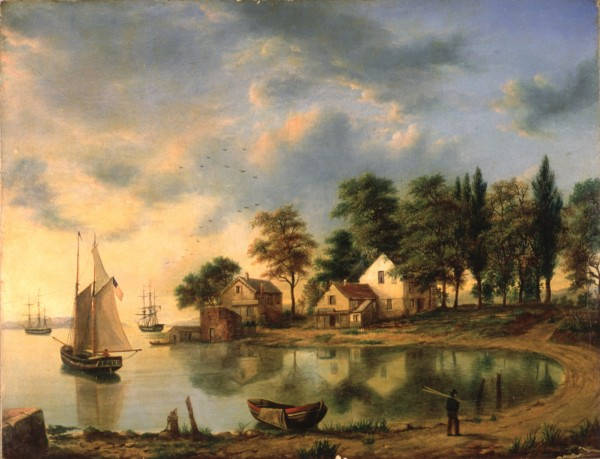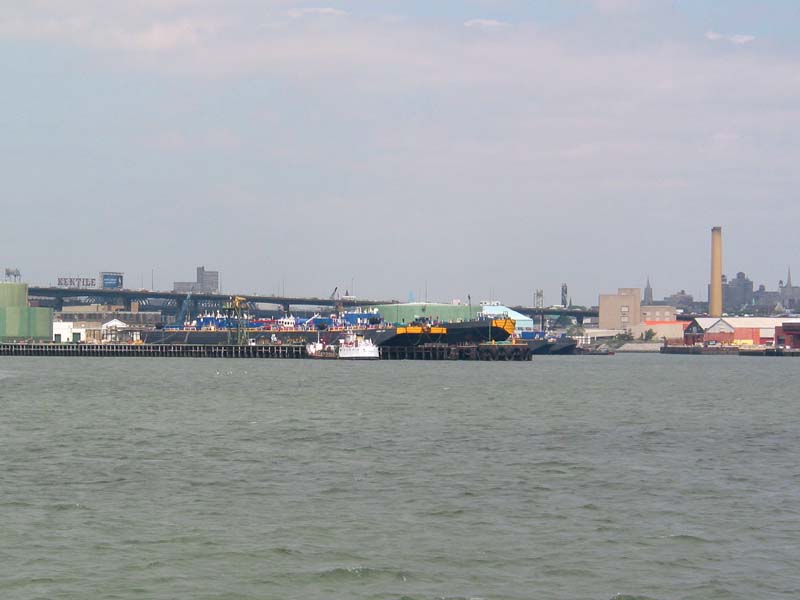
Shifting Baselines
Did you ever meet a relative you had not seen in many years, and you noticed they had changed. Maybe they were slimmer. But people they saw often did not notice the change because it occurred slowly. Your baseline for comparison was several years old. The person's close friend's baseline was only a few days old.
Our ability to notice change is determined by our baseline. See the YouTube video Shifting Baselines in the Sound.
If we have always lived in a city with smog or air pollution, we accept it as normal. We don't remember the days when the city had clear, clean, unpolluted air. Our baseline says the city is normal. A much older baseline says the city is polluted.
This is the phenomena of the shifting baseline. It colors our ability to notice environmental change because change is often slow, spanning generations. Sam Houston, visiting Texas today, would be shocked by the change. He would notice the buffalo and the wide-open spaces are gone, the night is not very dark, and the streams are muddy with few fish.
You shoulda seen it when:
- "You could see grass on the bottom in at least 10 to 12 feet of water."
- "Oyster reefs were so abundant they were navigational hazards."
- "Water flowed out of water wells at the land surface."
- "The shad run was so strong it looked like you could walk across the river on their backs."
- "You could paddle up any creek and fill the skiff with crab 'doublers'.”
- "Ducks and geese were there for the taking."
- "Sturgeon roe was more abundant than Russian caviar."
All these statements once applied to Chesapeake Bay and the Northern Neck. Today, it is hard to imagine what the Bay was like at the time Europeans arrived. Scientists refer to changes in perception (Old Timer’s Syndrome) as “Shifting Baselines.”
From Northumberland Association for Progressive Stewardship.
Some examples
- People were once uncommon. It was possible to walk for days without
meeting another person. Now, it is possible to walk for days without
getting out of an urban area, say from Boston to Philadelphia.
- Fish were once extremely plentiful. Many wrote that there were so
many fish in the ocean it was almost possible to walk across a bay
on the backs of the fish. Watch the YouTube video Emptied
Oceans.
- Streams and rivers were crystal clear. Beowulf could see clearly
underwater in a river. The Rhine gold was visible on the bottom of
the Rhine.
The Gallo-Roman writer Ausonius wrote pf the Moselle River in late fourth-century Gall as 'bright as water in crystal goblets,' and noted that 'vision, when it pierces the stream, finds the open secrets of the bottom.'
–Roberts (2007).
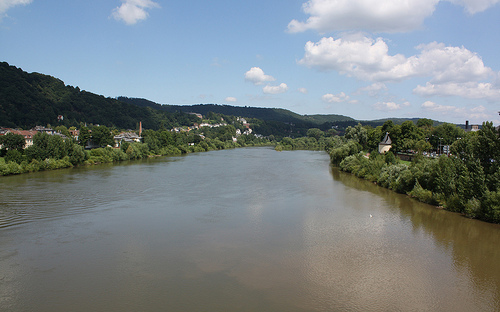
The Moselle River is no longer crystal clear. Photo of river taken from the roman bridge, Trier, Germany on July 4, 2009.
Photo by Christopherd Potts.
Bonito is one of those magical places in Brazil that often escapes notice. Tucked into a corner of southwestern Brazil near Paraguay, Bonito lies more than 1000km from the sea and the nearest big city is a long, bumpy bus ride away. Outside of town are Bonito's star attractions, its crystal-clear rivers surrounded by lush forest. Owing to high concentrations of calcium carbonate, the river over time has become a natural aquarium, with visibility of over 30 meters.
– From Bonito – Land of crystal-clear rivers.
- Air was clear. You could see the mast of a ship many miles away,
before you could see the hull. Few areas of the world have air this clear.
- Once we stood in awe of the night sky with millions of stars spread
across the black vastness of space. Our ancestors could clearly see
stars and the milky way on moonless nights. Now most people can see
only the brightest stars if they are lucky, or no stars if they are
in a megapolis. See the Bortle
Dark-Sky Scale to see how badly our skies are polluted by light.
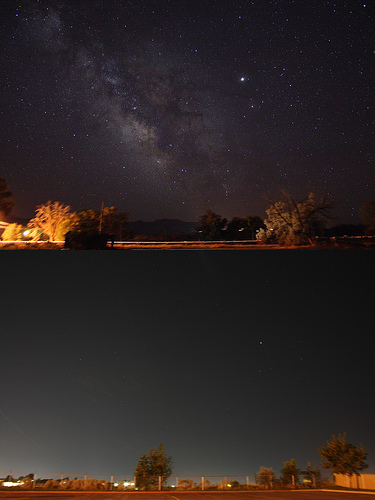
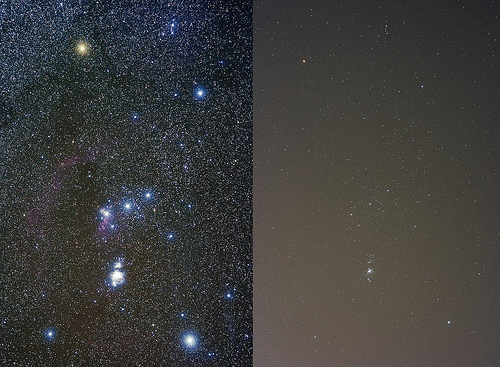
Light pollution hides the beauty of the night sky.
Left: The southern sky, featuring Sagittarius and Scorpius. Top - Leamington, UT, pop. 21; Bottom - Orem, UT, in a metropolitan area of about 400,000.
From Southern sky, country vs. city.
Right: The constellation Orion, imaged at left from dark skies, and at right from Orem, UT at the heart of the Utah County comprising about half a million people.
From Light Pollution: It's not pretty.
- The commonplace of the prehistoric landscape was very different from the modern landscape.
Look at the changes in 152 years at Gowanus Bay in Brooklyn, New York. For more, read Civil society strategies on the Gowanus Canal by Lindsay Campbell. What would a resident from 1851 think of modern Brooklyn? What was your hometown like 100 years ago?
An 1851 oil painting by Australian artist Henry Gritten. The full title is “Sun Set at Gowanus Bay in the Bay New York” and the original hangs in the Allport Library and Museum of Fine Arts in Tasmania. The bay at that time was a "Marshy inlet with game, fish, oysters; Gowanus oysters exported to Europe."
From Ephemeral New York.
Gowanus Bay in 2003. "Ah, the Gowanus, that fetid Brooklyn canal synonymous with contamination and death. Sewage, industrial waste — perhaps even human remains — still molder at its murky bottom. On occasion, its famously noxious, sulfurous aroma wafts over its banks." Click on the image for a zoom.
From Wired New York Forum.
References
Roberts, C. (2007). The Unnatural History of the Sea, Island Press/Shearwater Books.
Revised on: 27 May, 2017

